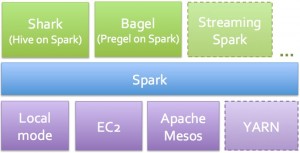Reveal—visual eQTL analytics by Günter Jäger, Florian Battke and Kay Nieselt. (Bioinformatics (2012) 28 (18): i542-i548. doi: 10.1093/bioinformatics/bts382)
Abstract
Motivation: The analysis of expression quantitative trait locus (eQTL) data is a challenging scientific endeavor, involving the processing of very large, heterogeneous and complex data. Typical eQTL analyses involve three types of data: sequence-based data reflecting the genotypic variations, gene expression data and meta-data describing the phenotype. Based on these, certain genotypes can be connected with specific phenotypic outcomes to infer causal associations of genetic variation, expression and disease.
To this end, statistical methods are used to find significant associations between single nucleotide polymorphisms (SNPs) or pairs of SNPs and gene expression. A major challenge lies in summarizing the large amount of data as well as statistical results and to generate informative, interactive visualizations.
Results: We present Reveal, our visual analytics approach to this challenge. We introduce a graph-based visualization of associations between SNPs and gene expression and a detailed genotype view relating summarized patient cohort genotypes with data from individual patients and statistical analyses.
Availability: Reveal is included in Mayday, our framework for visual exploration and analysis. It is available at http://it.inf.uni-tuebingen.de/software/reveal/.
Contact: guenter.jaeger@uni-tuebingen.de
Interesting work on a number of fronts, not the least of it being “…analysis of expression quantitative trait locus (eQTL) data.”
Its use of statistical methods to discover “significant associations,” interactive visualizations and processing of “large, heterogeneous and complex data” are of more immediate interest to me.
Wikipedia is evidence for subjects (including relationships) that can be usefully identified using URLs. But that is only a fraction of all the subjects and relationships we may want to include in our topic maps.
An area I need to work up for my next topic map course is probabilistic identification of subjects and their relationships. What statistical techniques are useful for what fields? Or even what subjects within what fields? What are the processing tradeoffs versus certainty of identification?
Suggestions/comments?


